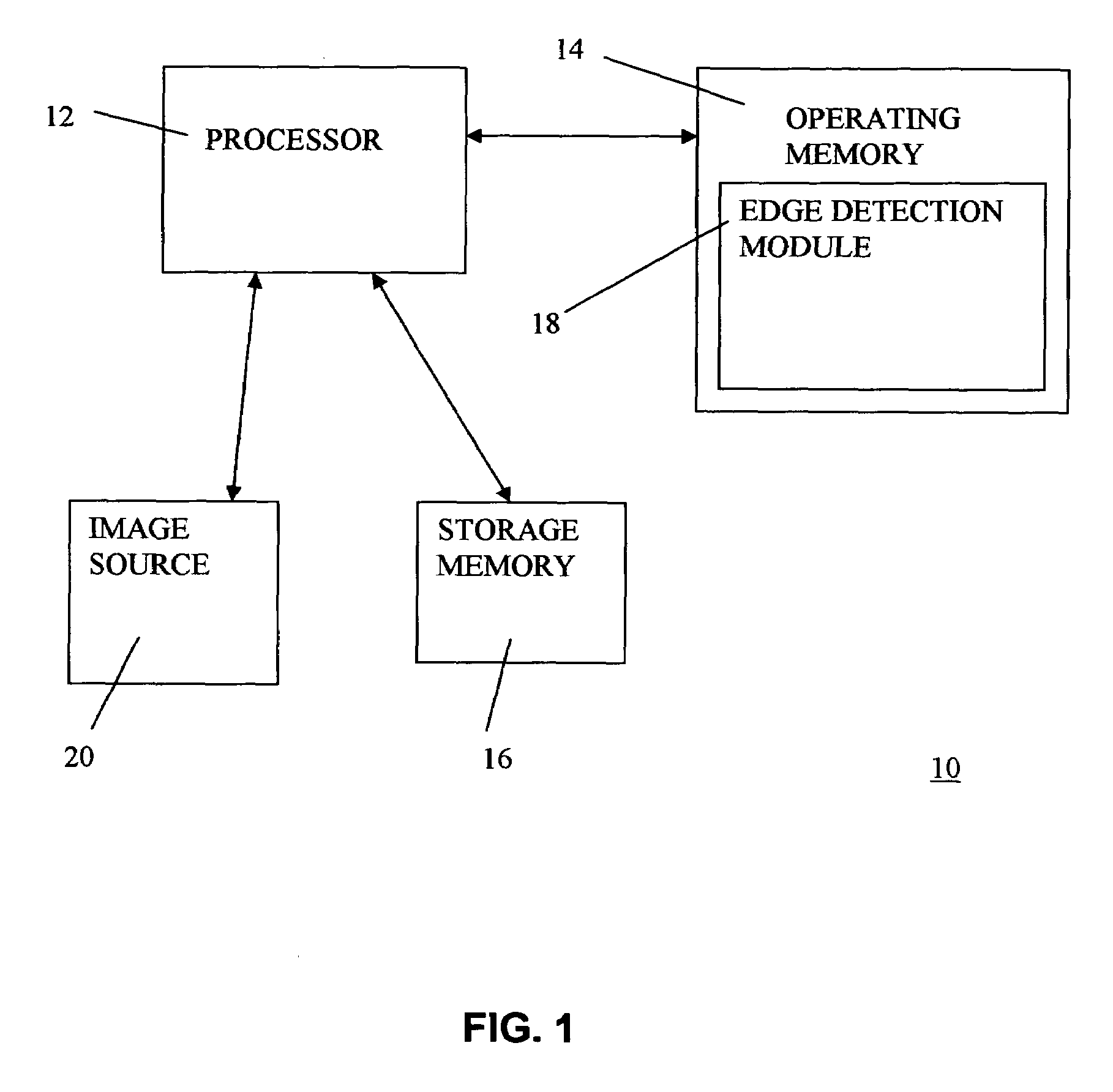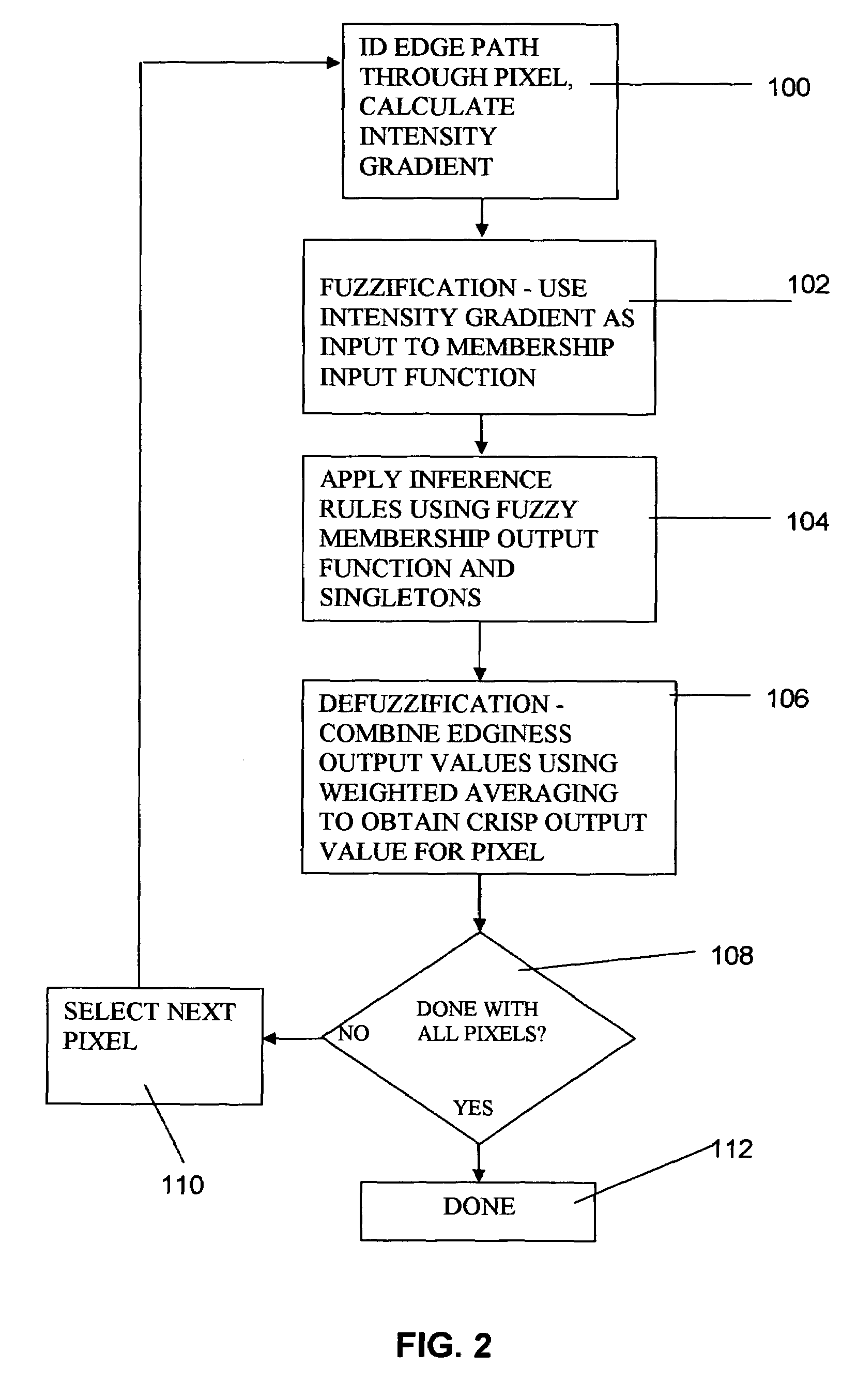Image edge extraction via fuzzy reasoning
a fuzzy reasoning and image edge technology, applied in image analysis, instruments, computing, etc., can solve the problems of confounding the distinction between edge and non-edge, the problem of determining what is and what is not an edge, and the detection of specific kinds of noticeable edges based on mathematical models
- Summary
- Abstract
- Description
- Claims
- Application Information
AI Technical Summary
Benefits of technology
Problems solved by technology
Method used
Image
Examples
Embodiment Construction
[0026]With reference to FIG. 1, a computer system 10 is illustrated which includes a processor 12 that is interfaced to an operating memory 14 and a storage memory 16, as is conventional. Loaded into the operating memory 14 is an edge detection software application or module 18 that is designed to detect edges in multiple bit digital images using fuzzy reasoning in accordance with a preferred embodiment of the present invention. The computer system 10 can be implemented using any conventional PC, for example, but other computer systems can be employed as well.
[0027]Multiple pixel digital images to be analyzed for edges are either retrieved from the storage memory 16 or from an external image source 20 and are fed into the edge detection application 18 for analysis with an edge detection algorithm. In the specific method of the present invention, a multiple pixel digital image is analyzed for edges on a pixel-by-pixel basis. That is, each pixel in the image is analyzed to determine t...
PUM
 Login to View More
Login to View More Abstract
Description
Claims
Application Information
 Login to View More
Login to View More - R&D
- Intellectual Property
- Life Sciences
- Materials
- Tech Scout
- Unparalleled Data Quality
- Higher Quality Content
- 60% Fewer Hallucinations
Browse by: Latest US Patents, China's latest patents, Technical Efficacy Thesaurus, Application Domain, Technology Topic, Popular Technical Reports.
© 2025 PatSnap. All rights reserved.Legal|Privacy policy|Modern Slavery Act Transparency Statement|Sitemap|About US| Contact US: help@patsnap.com



